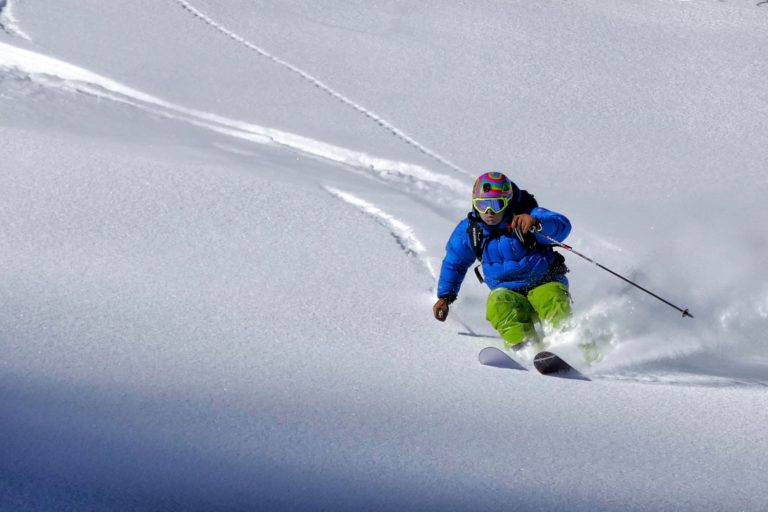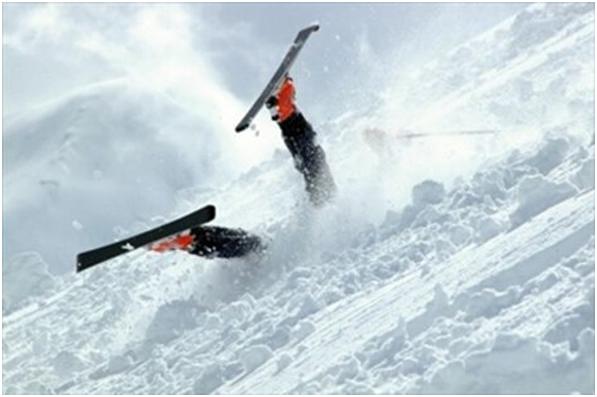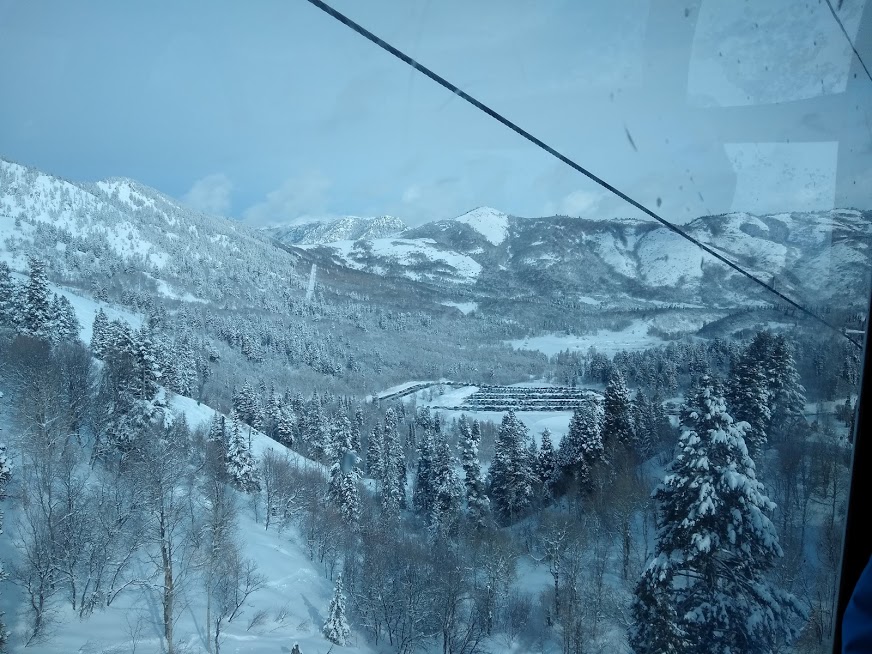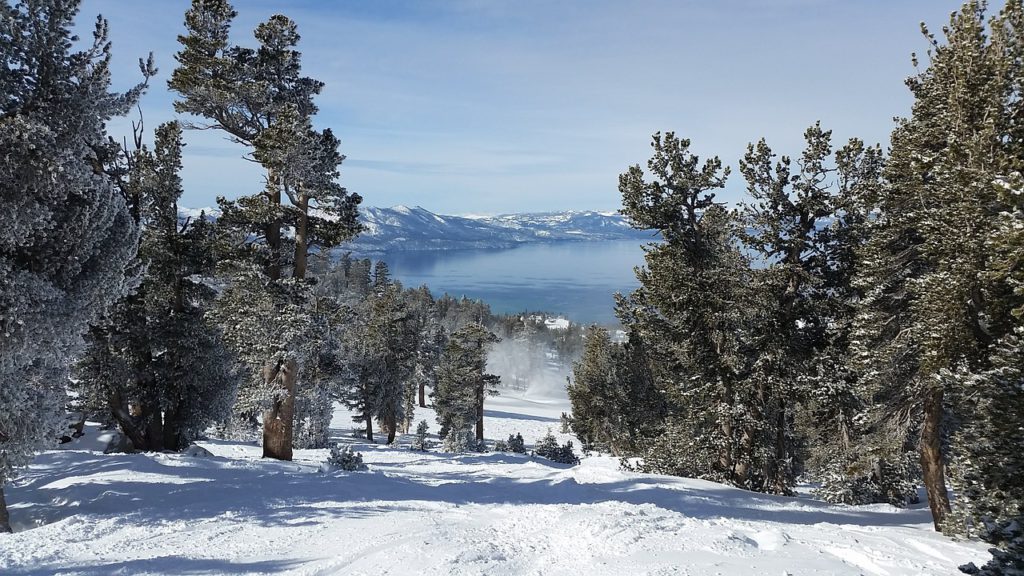Tahoe, Utah, or Colorado – Which Offers The Best Overall Skiing Experience?
In this deep dive into the Western United States’ top 3 skiing areas, we’ll review the pros and cons of each location. By the end, hopefully you’ll have a clearer picture when making your decision as to where you’ll ski next.
The criteria we’ll be evaluating our favorite ski areas by are:
- The skiing itself
- Cost (for lift tickets, lodging, getting there)
- Ease-of-access
- Leisure/Fun (what is there to do around there other than skiing)
- Arbitrary Final Thoughts
1. The Skiing
The skiing itself – the most important component of any trip to the slopes. Keep in mind that any day can be a great or terrible day on the slopes based on the conditions. We’ll base the ratings below on the overall, average quality of the conditions and my own arbitrary experience.
Tahoe: 3/5
If you’re from the Bay Area, you’re probably saying What the hell! Tahoe’s awesome. If it makes you feel better, I’m from the Northeast and would rate the skiing there a 1.5/5.
The reason for the middling skiing rating is for two reasons:
1) Powder Quality
The powder quality in the Sierras tends to be far lower than the other areas of the Rockies. Why? Maybe it’s because the Sierras are closer to the sea and therefore, wetter. The powder tends to be more dense and not nearly as ski-able. During my first time at Northstar, there was a massive snowfall the week before and the powder in the non-groomed areas was over 3 feet deep!
Going off my latest experience in Colorado, I thought it would be a great idea to ski through the light, fluffy powder I recently experienced.
How I looked… only took me 30 minutes to climb out.
Anyways, I’m not a big fan of the powder conditions in Tahoe. However, the groomers are great, and the resorts offer great mogul and trail variety. Heavenly in particular offers some of the most beautiful views I’ve ever seen skiing.
The view at Heavenly. View is even better IRL.
Unfortunately, good views aren’t everything, and there’s one more issue with Tahoe-area skiing we need to address…
2) Crowd Size
Of all the areas I’ve skied in the western US, Tahoe is by far the most crowded. During the season, it seems like half the Bay Area gets into their cars and comes up to Tahoe. Which is great for the local economy and the ski resorts, but not so great for your skiing experience.
And while the crowds are not as bad as the northeastern US, they do have an impact, as it is very frustrating to avoid large numbers of people of varying skill levels (or worse, having to trust the people behind you to know what they’re doing). If you’ve ever had a skier or snowboarder run into from behind, you know what I’m talking about.
This crowding effect becomes particularly pronounced on the blues and greens — it is by no means a deal-breaker, but is worth considering when making your next ski-trip decision.
Utah: 4/5
Utah skiing quality receives a solid 4 out of 5 — skiing here is generally good or great, though it is occasionally sub-par. Like most other ski areas, the Salt Lake City area is reliant on consistent snowfall. Otherwise, you end up skiing on an icy mess.
Skiing conditions in Salt Lake are icy just often enough to take off a point. Generally, however, the skiing experience in Utah is high quality, with powder that is smooth to ski through and some well-groomed trails on most days.
Also, being thousands of feet above sea level often leads to some pretty awesome views, and Utah does not disappoint.
The view from the gondola at Snow Basin
Also, a quick note about crowd size – it can generally feel a little overwhelming in the lodge/parking areas, however, on most mountains, it diffuses pretty well across the slopes.
Overall, while Utah’s skiing quality does not quite hit that perfect 5 out of 5, the quality is there and you have more space to spread out than you at Tahoe.
Colorado: 5/5
Hands-down, the skiing quality here is the best of the three. A powder day here means you’ll be skiing through some of the lightest, fluffiest powder the Rockies have to offer. Nothing quite beats skiing through one of the bowls at Copper Mountain in 3 feet of smooth powder.
Even on regular days, the ski conditions in Colorado are almost always top-notch. The trails are well-maintained and well-groomed, with a large variety of terrain. Plus, most mountains are so large and have so many trails that the cumulative effect of skiers and boarders on the snow quality is minimal. On most mountains, the quality of a run will diminish as more and more people go down.
The mountain sizes also factor into crowd size. Colorado is the only place I’ve skied where it can truly feel like you’re almost alone on the mountain. For example, Vail is so large and offers such a variety of runs and bowls, that it is possible to ski a run and not see anyone outside of your group.
Vail’s so large it has 3 different trail maps!
The Verdict – The Skiing Itself:
Were I to choose my next ski trip purely based on the quality of the skiing itself, I would have to go with Colorado. The skiing there is absolutely phenomenal, with such a large number of resorts to choose from. The quality of the snow is superb, the mountains feel uncrowded, and you could spend a week at most mountains before getting bored.
If the quality of the skiing is the only criterion that matters to you, then you can stop reading right now. However, just because Tahoe and Utah didn’t beat out Colorado in ski quality doesn’t mean there aren’t other factors worth considering. You’re not going to spend every waking moment of your vacation skiing, and there’s plenty more to think about.
2. Cost
Cost is one of the biggest factors in deciding where to take any vacation. When it comes to skiing, your options can range from a 5-star resort in Aspen to cramming into a motel in South Lake Tahoe. However, we’ll take a look at the average expenses most people can reasonably expect. This means I’ll assume you do not have an Epic Pass (which you can use at all 3 areas) or any other season pass.
Tahoe: 3/5
Tahoe receives a 3 out of 5 for cost not because it is not possible to have a weekend at Tahoe for cheap, but because of the very high potential costs that you can incur.
Cost? At Tahoe… it depends.
Lodging
For example, if you want to stay in a decent hotel or cabin for a relatively low rate ($100 – $150 per room, per night), you’ll likely need to stay in South Lake Tahoe near Heavenly resort. This is where the majority of hotel and housing-for-rent availability is in the Lake Tahoe region.
However, should you choose to ski somewhere other than Heavenly (such as Kirkwood or Squaw), the low supply of places to stay will likely push you to around $200 – $300 per room, per night.
So, while the lodging expense at Tahoe can be low, it is generally pushed much higher once you venture out of the South Lake Tahoe area.
Cost of Actually Getting There
If you’re just driving from the Bay Area, getting to Tahoe can be pretty dang cheap – a tank or two of gas will cover you for the round trip. Could be as low as under $100.
If you’re flying in to either the Bay Area or Reno, you’ll need to factor in the cost of a flight, car rental, and you’ll likely want to buy or rent chains for the vehicle, just in case. Assuming your flight is $400 round trip, your car rental is $60 a day (you’ll want at least an SUV), and you buy chains for $60, your cost could easily be $760 for a 5-day trip for transportation alone.
Lift Tickets
If you buy online in advance, lift tickets at Heavenly are about $136 a day. Prices at Squaw and Northstar are similar. The cheapest tickets in the Tahoe area are available at Kirkwood (about $100 a day) and Homewood (about $84 a day).
If you’re willing to ski at the cheaper resorts or ski during the week, you can definitely save quite a bit of money. However, depending on how long you’re there for and where you’re staying, you might not have much of a choice.
Utah: 5/5
The Salt Lake City area has a pretty low cost-of-living, and it’s entirely possible to pass on plenty of those savings to your ski trip. While any big city has a ton of opportunities to spend a lot, Salt Lake generally comes in quite a bit cheaper than other major metro areas.
Lodging
With so much many places to stay available, finding a decent place for $100 to $150 a night should not be any trouble at all. It’s easy to find decent accommodations without sacrificing location — you can stay near downtown, get free parking at your hotel, and still be close to the slopes!
Cost of Actually Getting There
To get to Salt Lake, you’ll need to fly into SLC Airport. The good news is that SLC is a major airport, serviced by most major domestic airlines and plenty of inexpensive flights to and from the city. Plus, if you fly Southwest, you can check your skis and boots for free.
While you’ll need to rent a car, it’s possible to get away with a non-four-wheel-drive car. In my experience, the roads are well-maintained enough in the area that you can get away with a mini-van (and save quite a bit of money over a 4WD rental). Fair warning, I have had to help push a mini-van out of it’s parking spot before, so it might not be a bad idea to bring a bag of sand with you.
Lift Tickets
With a large number of resorts to choose from, there’s also a lot of variety in lift ticket prices. On the high end, you have Park City at $157 a day. In the middle you have Snow Basin ($120 to $135 a day) and Alta ($110 a day). On the low end, there’s Sundance ($85), Powder Mountain ($88), and Brighton ($89). This doesn’t cover every resort but shows that there is a pretty wide range of lift ticket prices available in the Salt Lake area.
Colorado: 3/5
Going to Colorado to ski, it is definitely possible to keep a lot of your expenses on the lower-end. However, if you stay somewhere like Aspen, you’re going to spend quite a bit more than the average.
Lodging
For lodging, you could stay all the way out in Denver, which would give you a whole city’s worth of options to choose from. However, assuming you’ll want to stay close to the mountains, towns like Breckenridge or Frisco are a better bet. Availability in these mountain towns is decent and will typically run you around $150 to $200 a night for decent accommodations.
Cost of Actually Getting There
Odds are you’ll be flying into Denver International Airport. Thankfully, this is a major airport with a ton of relatively inexpensive flights available (though Southwest looks pretty attractive once you start thinking about checking those skis).
One cost to consider is the rental car. Though the roads are generally well-maintained, the area can see large amounts of snowfall and getting around may require snow chains and/or 4WD. This can significantly increase the cost of a rental car to over $100 a day.
Lift Tickets
Lift tickets in Colorado tend to be pretty expensive, with Aspen ($174), Vail ($199), and Breckenridge ($179) lift tickets all on the high end. On the “lower end” you have Keystone ($157) and Copper ($109). On lift tickets alone, you’ll likely be spending anything you saved on your hotels/flights.
The Verdict – Cost:
Utah is the clear winner of this round. While Colorado and Utah both benefit from having major airports nearby and cheaper flight costs, Utah/Salt Lake City very clearly win on cheaper lift tickets and less expensive places to stay.
3. Ease of Access
How easy is it to get to the slopes? Ski towns and resorts are naturally prone to weather-related issues, and the degree to which they can be minimized often leads to a better skiing experience.
Tahoe: 2/5
Why such a low rating for a place that’s “only” a 3 and a half hour drive from the Bay Area? Maybe that’s the case for people who can leave at optimal times, but for the rest of us, this drive tends to be an absolute slog.
For starters, a lot of people in the Bay Area love to ski, which is awesome. Until they all hit the road at the same time. Traffic can easily double the time it takes to get to Tahoe. On top of that, road conditions may require chains (I’ve had to use them about half the time going to Tahoe). This will slow you down further, as you should not go faster than 25 mph with chains on.
Also, whenever chains are required, you get a fair number of people who think they’ll be fine without them and get into accidents. Traffic then piles up and getting to the slopes in a reasonable time becomes impossible.
This massive traffic pile up doesn’t quite end once you reach your lodging — you’ll be waiting in traffic every day getting to the slopes (which is why you want to stay close to where you’re skiing). This factor unfortunately discourages skiing multiple resorts in the same trip.
Utah: 5/5
Why does Salt Lake get the perfect 5 out of 5?
Salt Lake airport
1) Traffic
What traffic? From the moment you land to the moment you leave Salt Lake, you’ll typically experience little to no traffic. Maybe right as you approach the slopes and you’re trying to park, but that’s it.
From the airport to your downtown hotel? None.
From your hotel to the slopes? None until you get right up to the resort.
Getting around downtown? None.
Having lived in a few major cities around the US, I was shocked at how little traffic there was my first time in Utah (and every other time). The lack of traffic alone alleviates major headaches during your ski-cation.
2) Distance
9 resorts within an hour of Salt Lake. You won’t spend a long time getting to the resorts, and you’ll be able to go to a different one each day of your vacation.
Also, the airport is so close to the city (and the slopes) that you won’t need to spend a lot of time driving to your destination.
3) Everything Else
Almost all traveling takes place on major roads, which are well-maintained and easy to drive on. For the short stretches off the highway, the roads are plowed and monitored. As I mentioned above, it is entirely possible to get away with a front wheel drive vehicle during your trip.
Another factor – Ubers and Lyfts are relatively inexpensive here and even offer ski-friendly rides.
Colorado: 4/5
As a major Southwest hub, Denver airport is easy to get to from across the country (and therefore, easy to take advantage of free ski and boots check). Also, most of the slopes are about 2 hours from the airport.
Once you’ve arrived at your lodgings, most of the mountains are relatively close together. However, Aspen is much farther from Vail, Copper, Keystone, Breckenridge, and the rest of the resorts (about 2 more hours).
The fact that you can stay in one location, like Frisco or Silverthorne, and be close to a few different resorts is a huge plus.
Additionally, the highway tends to be closely watched and maintained, and you will likely get by fine without chains. However, 4WD is highly recommended since weather in the mountains can get quite hairy.
Overall, though, getting to and from the slopes in Colorado is relatively smooth and staying close-by is an easy option.
The Verdict – Ease of Access:
Though this round is a bit closer, Utah is the clear winner. The fact that you can stay downtown in a major metropolitan area and be close to the slopes is huge. Plus, the lack of traffic and overall logistics related headaches makes your ski-cation oh so much smoother.
4. Leisure/Fun
You’re not going to spend your whole time on the slopes (or stuck in traffic hopefully). The availability of nightlife and quality dining options is a super-important factor when making your next ski vacation decision.
Tahoe: 4/5
Tahoe offers great nightlife and dining options if you’re in South Lake Tahoe. Otherwise, you’ll be in an area without a ton to do in the evenings. There are plenty of places to eat around the lake, but South Lake is where it’s at for evening activities. I’m going to give the rest of Lake Tahoe a 1/5 – the rest of this review will be focused on South Lake.
Thanks to the fact that South Lake Tahoe shares a border with Nevada, there are a ton of casinos just past the stateline. With casinos comes all your usual amenities: clubs, bars, and restaurants. This means that even if gambling isn’t your thing, there’s plenty to enjoy.
PEEK nightclub in South Lake Tahoe
Colorado: 2/5
I’m assuming you’re not staying in Denver (otherwise, 5/5 but have fun driving 2+ hours to the slopes in the morning). If you’re staying somewhere centrally located, like the Frisco/Silverthorne/Breckenridge area, you’ll find many good places to eat (I haven’t found any ski-resort towns that don’t).
However, the nightlife in this area is definitely lacking. Besides your typical ski-resort bars, there isn’t a whole lot catered towards a younger crowd, and the environment can definitely seem a bit underwhelming in the evenings compared to some of our other choices.
With that being said, if you’re anything like me and super tired after a full day on the slopes, the lower-key activities aren’t necessarily a bad thing.
Utah: 5/5
You’re staying downtown in a large city. There’s a ton to do and plenty of great places to eat and drink. Whether you’re looking for something low-key (like happy hour) or higher-octane (nightclub with a DJ), you’ll see that Salt Lake offers all of the above.
And, if you’re staying a little further out, I’ve found the Uber and Lyft prices in Salt Lake to be pretty reasonable.
The Verdict – Ease of Access:
This one is not easy, but I have to give the edge to Utah. Though it puts up a good fight, Tahoe ultimately loses out on the fact that there is very little going on outside of South Lake Tahoe. However, if only South Lake Tahoe were considered, I would rate this round a tie.
5. The Overall Verdict / Final, Arbitrary Thoughts
First off, let me say that I have thoroughly enjoyed my times in Tahoe, Utah, and Colorado (except that time we had to turn back from Tahoe). All 3 areas are incredibly fun, and I wouldn’t trade my experiences at any of them for time anywhere else.
With that being said, I’ve found that Colorado has the best overall skiing and would be my first choice based on skiing alone. Overall, however…
The Verdict – Final Scores:
Tahoe: Skiing – 3/5, Cost – 3/5, Ease of Access – 2/5, Leisure/Fun – 4/5, Overall – 3/5
Utah: Skiing – 4/5, Cost – 5/5, Ease of Access – 5/5, Leisure/Fun – 5/5, Overall – 4.75/5
Colorado: Skiing – 5/5, Cost – 3/5, Ease of Access – 4/5, Leisure/Fun – 2/5, Overall – 3.5/5
The clear winner is Utah. Overall, this comes down to the absolute convenience and ease-of-access when staying in Salt Lake. So many of the logistical headaches are simply made easier, and, when paired with big-city amenities and the lowest overall cost, it’s hard to say Utah doesn’t deserve this top spot.
I hope you enjoyed this take-down of the best overall skiing experience between Tahoe, Utah, and Colorado. If you want to add to the conversation with your own thoughts, feel free to comment below – I’d love to hear what you think!










When it comes to entertainment, I’d not give it to Utah. More going on in Colorado. Now you will have to be in Telluride, Aspen or Breck but the music and entertainment is better if you like bluegrass or country music. Into pop and Utah may win.
Yeah individual preferences will definitely affect where you want to go… I like that Salt Lake / Utah has the most options with a large city right there. You’re pretty far from Denver out in Colorado ski areas.
Thanks for the article. Very informative. In your opinion, how would you compare the Lake Tahoe and Park City areas in terms of nightlife/entertainment? I
Lake Tahoe is better than Park City but Salt Lake City is on par or better than Lake Tahoe – most of Lake Tahoe is pretty tame unless you’re at South Lake. Salt Lake City may be 50% Mormon or so, but that still leaves a million people there so you’re bound to have some decent nightlife options with a city that size. Things do close up early… 1 AM in Salt Lake versus open real late on the Nevada side of South Lake… so I’d take that into account.
Utah isn’t as great as you think and Tahoe is better than that. Reno isn’t a big hub, but the drive from Reno to Tahoe doesn’t have traffic. Let’s not pretend you don’t need snow chains in Utah or Colorado either. Also, if you’re skiing in North Lake Tahoe, you could just stay in Reno or maybe Carson City. Great nightlife there (kind of like a mini Las Vegas) and it’s affordable. Nightlife: Utah 4/5, Tahoe, 5/5, Cost: Utah 5/5, Tahoe 4/5, Ease of Access: Utah 5/5, Tahoe 4/5. Overall Utah isn’t that much better than Tahoe, only in the powder quality to be honest.
True – coming from Reno, could make Tahoe a much more attractive option… but it can be quite tough coming from the Bay Area. I do agree, the nightlife there is fun! Still like Utah better overall – can always stay in Park City and go to Deer Valley or PCMR if weather is an issue, plus Salt Lake City is a lot of fun with the benefit that the highway between Park City and Salt Lake is almost always in good shape.